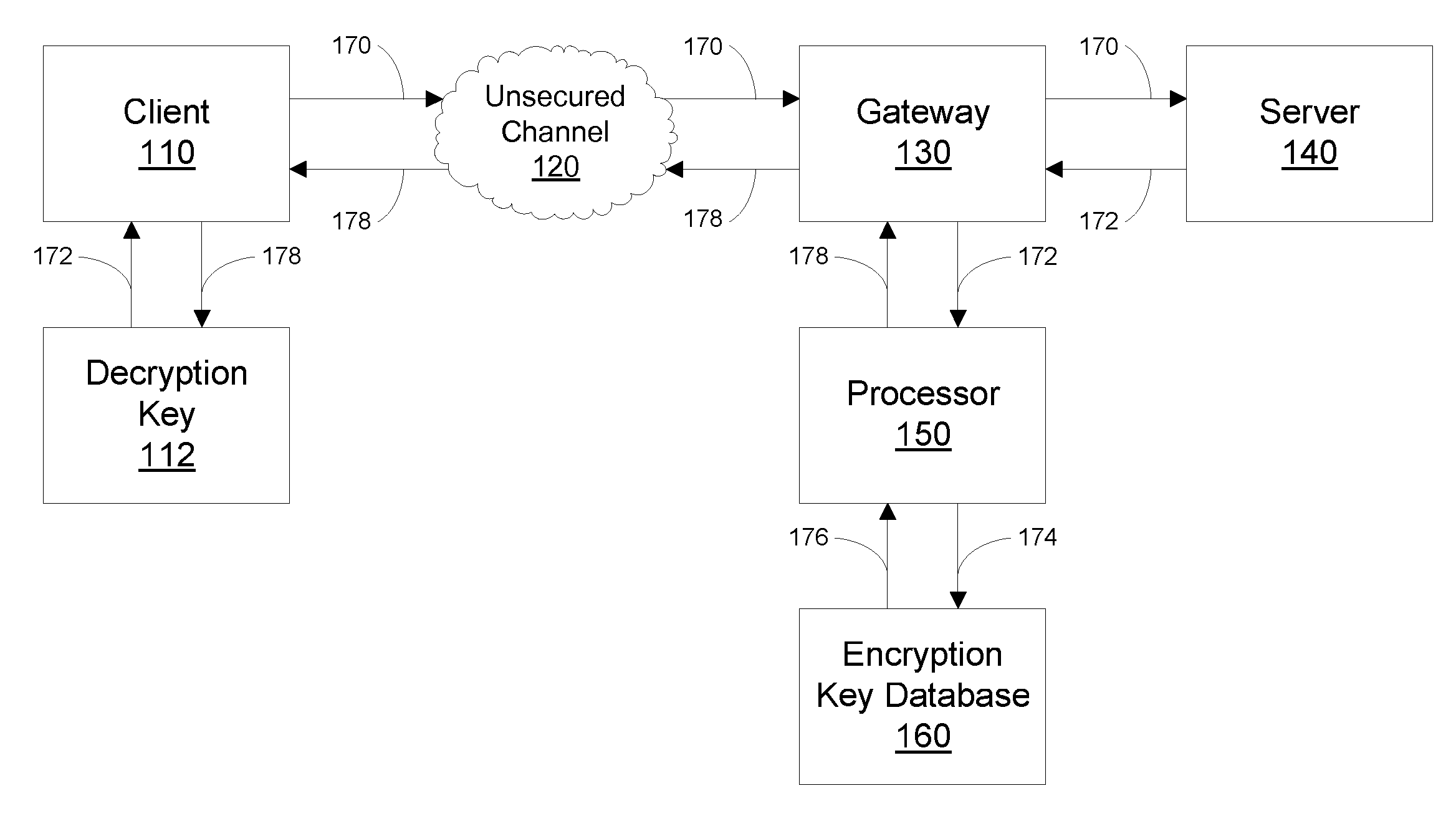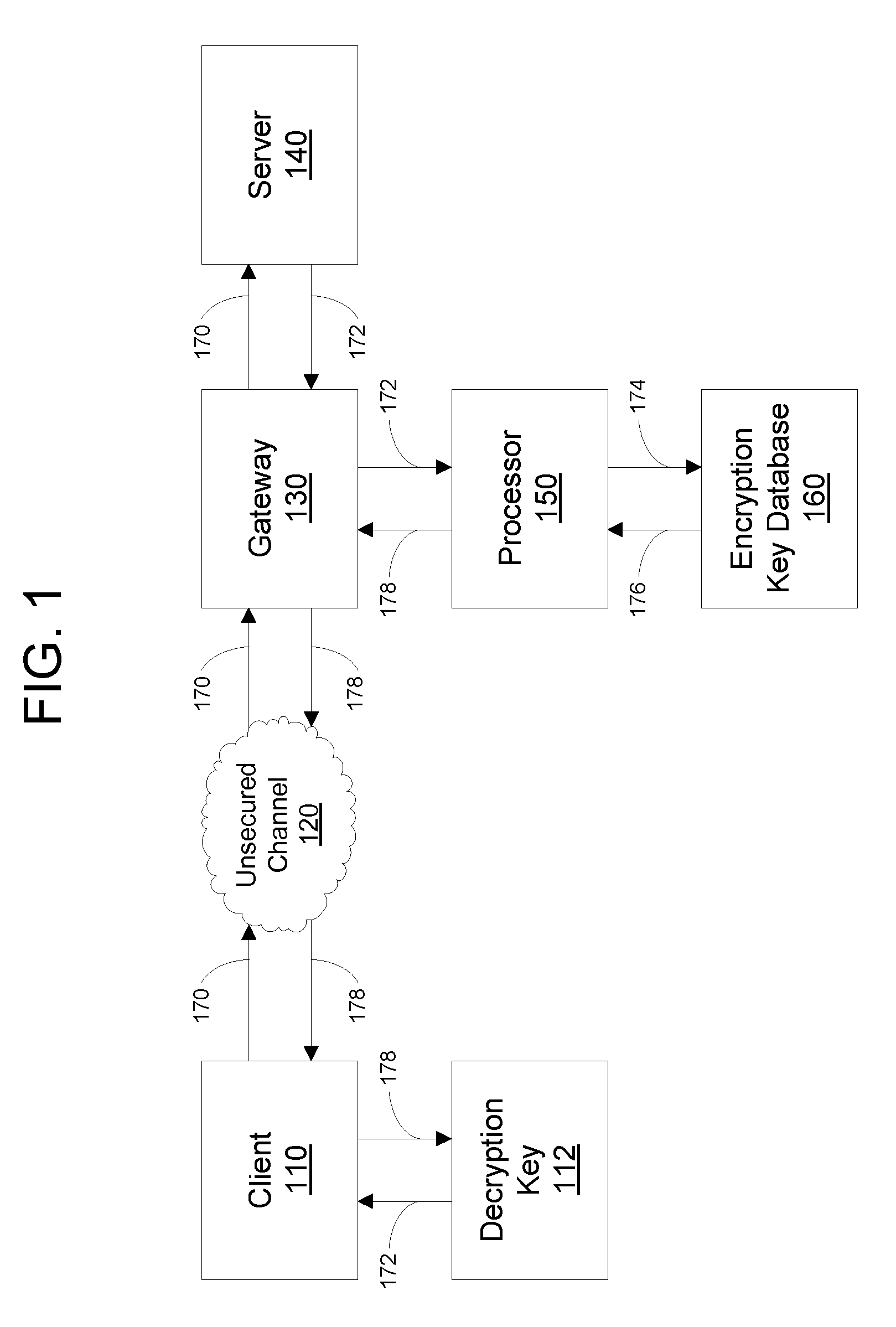Secure Communication Using Asymmetric Cryptography and Light-Weight Certificates
a technology of asymmetric cryptography and secure communication, applied in the field of secure communication using asymmetric cryptography and lightweight certificates, can solve the problems of requiring considerable time, skill and expense, and engaging in encrypted but unauthorized communications with a server,
- Summary
- Abstract
- Description
- Claims
- Application Information
AI Technical Summary
Benefits of technology
Problems solved by technology
Method used
Image
Examples
Embodiment Construction
Illustrated embodiments of the invention provide secure, encrypted communications between servers and authorized clients over an unsecured data communications channel, without requiring a traditional PKI. A secure communications channel is established by encrypting outbound server messages using a locally-stored encryption key of the purported client, rather than retrieving this key from a PKI as would be done in the prior art. Thus, man-in-the-middle attacks on the (usually insecure) data path between the PKI and the server are entirely eliminated. Also, because the encryption keys are locally stored, they may “revoked” by simply deleting them from the local storage. Thus, various embodiments of the invention also eliminate the need to distribute CRLs to large numbers of clients, or to respond to OCSP requests. Further, worldwide revocation of the use of particular encryption keys may be effected nearly instantaneously.
Outbound communications from a server, unlike inbound communica...
PUM
 Login to View More
Login to View More Abstract
Description
Claims
Application Information
 Login to View More
Login to View More - R&D
- Intellectual Property
- Life Sciences
- Materials
- Tech Scout
- Unparalleled Data Quality
- Higher Quality Content
- 60% Fewer Hallucinations
Browse by: Latest US Patents, China's latest patents, Technical Efficacy Thesaurus, Application Domain, Technology Topic, Popular Technical Reports.
© 2025 PatSnap. All rights reserved.Legal|Privacy policy|Modern Slavery Act Transparency Statement|Sitemap|About US| Contact US: help@patsnap.com



